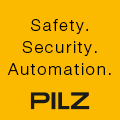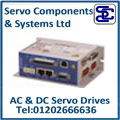
Posted to News on 10th Mar 2015, 17:01
CE marking: what buyers should look for to ensure machine safety
Derek Coulson, an independent machinery safety consultant with Safe Machine Ltd, outlines the requirements for CE marking and what buyers should look for.
CE marking of machinery has been with us for twenty years now, with the original Machinery Directive 89/392/EEC being brought into UK law for January 1st 1993, and a two-year transition period to allow all manufacturers to be able to comply. This directive was amended a number of times, and the amendments were consolidated into a New Directive 98/37/EC. Fast-forward to 2015 and we have the latest incarnation of the Directive, 2006/42/EC. This contains substantial rewrites, and has some additional requirements and definitions.
Machinery manufacturers in a lot of cases have still not fully realised the requirements of the Directive; however, due to the general lack of policing over the years, it has not been a problem for them. Many still do not CE mark equipment properly to this day, especially with regard to complex assemblies of machinery, where individual machines are linked together, often supplied by a number of organisations. Any manufacturer building series machinery should have assessed that machinery to the latest version of the Essential Requirements in the Directive. Any machinery supplied since the end of 2009 should comply with the requirements of the 2006/42/EC Directive or, strictly speaking, The Supply of Machinery (Safety) Regulations 2008. The Regulations are the version of the Directive brought into UK Law but, for clarity, we will talk about the Directive.
Who is 'the manufacturer'?
Manufacturers are defined in the Machinery Directive. Clearly a company building machinery as its main business is a manufacturer, but integrators of equipment, end users of equipment creating new machines out of new or existing machines (or partly completed machines), and people building machines for their own use, not for sale, are also manufacturers in the eyes of the Directive, and the law.
The EU has changed a lot in the last twenty years. From a purely trading organisation, designed to prevent future conflict within Europe, political aims have developed and it appears to be heading towards becoming a United States of Europe. The majority of the laws adopted by each country are derived from European Directives, and once the European Parliament has agreed them, there is generally no way back. There are now 28 countries with more aiming to join in the near future. However, this is not a political essay, it is intended to make end users and manufacturers realise what their responsibilities are under the Directives in place, and to ensure that working people go home in one piece, with all of their limbs and fingers, at the end of their days work.
Directives are adopted as law in each country's legal system, and compliance is mandatory. It is a criminal offence not to comply, punishable by fines or even imprisonment.
The Machinery Directive is a 'New Approach' Directive, which means that instead of being prescriptive and telling manufacturers what to do to ensure machines are safe, it lays down Essential Health and Safety Requirements (EHSRs), which the manufacturer should endeavour to comply with. The best way to do this is to ensure that the EHSR's are listed with comments explaining how the machinery meets each requirement. This way, every point is addressed, and there is more likelihood that the machinery is safe.
European standards
The Directives are supported by European Normative Standards that are not legally binding. However, compliance to a harmonised EN standard has a presumption of conformity to the Essential Requirements covered by the standard. There are somewhere in the region of 700 standards harmonised to the Machinery Directive alone.
Most manufacturers should have in the region of 15 to 20 standards, depending on what they are manufacturing. These should be kept up to date; the current list is on the Europa website in the Enterprise and Industry section, under Machinery. There is also a free Guide to the Machinery Directive 2006/42/EC available to download from the same site (a word of warning: do not just print it, as it has over 400 pages). The guide has no legal standing, but was written by the people who wrote the Directive and is their interpretation of what they meant. A court may decide they meant something different, but it is unlikely.
Buyers beware
Because it is perceived that having the CE marking means that the machine is safe, many end users just check it is there, not bothering to properly audit the equipment and make sure that an attempt has been made to ensure the CE marking is correctly applied.
There is another Directive that applies to the use of work equipment, the Use of Work Equipment Directive and its amendments. Unlike the Machinery Directive, this has been adopted in different forms in each country. In the UK we have the Provision and Use of Work Equipment Regulations (PUWER). Other EU countries have similar requirements, but worded differently. Regulation 10 of PUWER states 'Every employer shall ensure that an item of work equipment conforms at all times with any essential requirements, other than requirements which, at the time of its being first supplied or put into service in any place in which these regulations apply, did not apply to work equipment of its type.'
What this means is that the end user should be checking that equipment supplied with CE marking actually meets the requirements, so end users should be checking that the Technical File required by the Machinery Directive actually exists, and that it contains the correct information. Key to this is a report detailing the Essential Health and Safety Requirements, and preferably an explanation of how the machine complies with them. In addition to the technical information you would expect, such as drawings and an explanation of what the machine is, what it is intended to do and how it works, there should be copies of risk assessments, preferably going back to the design stage, and possibly a HAZOP study as well.
This is all information that is required; however, the manufacturer should also be identifying how the machine should NOT be used, and listing foreseeable misuse. Remember, if you are putting together an assembly of machines, this is up to you to document...
Who is responsible for CE marking?
The first concern for companies purchasing machinery should be to determine WHO is going to take responsibility for the CE marking. This could be the prime contractor, the end user or an outside organisation. Either way, it should be determined at the start of the contract, not once equipment is being installed or, worse, when it has been running for some time!
The manufacturer must determine which Directives apply. In most cases, the Machinery Directive applies, if the equipment is electrically powered, and especially if there are electronics, inverter drives, etc, then the Electro-Magnetic Compatibility (EMC) Directive will also apply. If there is pressure equipment, the Pressure Equipment Directive may apply. If the equipment is to be used in an explosive atmosphere, the ATEX Directive may apply.
Changes to the Construction Products Directive in 2013 means that items such as structural steelwork will require CE marking, so if building a new building, or adding an extension, CE marking may apply.
The 2006 Directive introduced the concept of Partly Completed Machinery as 'an assembly which is almost machinery but which cannot in itself perform a specific application. Partly completed machinery is only intended to be incorporated into or assembled with other machinery or other partly completed machinery or equipment, thereby forming machinery to which this Directive applies.' Partly completed machinery should not carry CE marking, and should be accompanied by instructions telling the assembler how to install and assemble it safely.
Unfortunately, it is usually the end user that bears the brunt of any prosecution, should things go wrong. It is much easier for Health and Safety authorities to prosecute end users under PUWER or the Health and Safety at Work Act than it is to prosecute manufacturers, especially those from outside the EU.
Review the Technical File
So, if you are buying a new machine, ensure that the contract details who has the responsibility for the CE marking, especially if it is a complex assembly of machines. If it is not defined, it probably will not happen.
Within the contract, specify that you want to review the Technical File. Do not expect the supplier to give you a copy because there will be intellectual property issues, and it probably is not in one place anyway, and likely to be held on numerous servers. Be prepared to travel to the manufacturer's premises to review it. If the manufacturer is not prepared to allow it to be reviewed, ask why.
Ensure that the Essential Health and Safety Requirement report and Risk Assessments are reviewed as a minimum. In addition, if there is a safety-related control system (and there usually is on most machines), ensure that there is a report detailing compliance with one of the functional safety standards, either EN 13849 or EN 62061. This should specify the Performance Levels or Safety integrity Levels required, and whether or not the equipment meets them.
It is a good idea to ask for the functional safety software files because, if you need to modify the machine at a later date, you have a starting point, without having to start from scratch. There are a number of software packages, one is called SISTEMA, from the German Institute for Occupational Safety and Health (BGIA). This is a free download and there is additional help in the form of 'cookbooks' available from the BGIA website.
Check the plate
Finally, as a quick check, have a look at the manufacturer's plate on the machine. Make sure the full name and address of the manufacturer is listed, the serial number, model, year of manufacture, CE marking. If information is required such as maximum speed, size of tools, weights of components etc, this should also be provided.
Then look at the Declaration and ensure it is a Declaration of Conformity. If it is a Declaration of Incorporation, it should state that the equipment should not be used until the equipment it is being incorporated into meets the provisions of the relevant Directives. This is effectively a 'Declaration of Non Conformity'!
The Declaration of Conformity should list the name and address of the manufacturer, and it should list all relevant information including serial number, model, type, etc. It should also contain the name and address of the person responsible for holding the technical file in Europe, especially if the equipment is from outside Europe. Ensure that it has the name of the responsible person, printed so it can be identified; ensure that there is a signature and date; ensure the correct Directive number is on the Declaration and that any standards listed are current. If any of these things are missing, do not be afraid to challenge the supplier before making the final payment.
Do not assume that just because the supplier is a large organisation that they have got it right.
Remember, it costs the same to build it correctly and compliantly as to build it wrongly, if thought about from the start.
Follow the link for more information about CE marking and CE Audit services available from Safe Machine Ltd.















